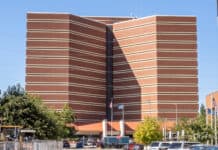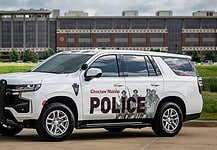Anthony Rodriguez is an environmental design major at Christopher C. Gibbs College of Architecture at The University of Oklahoma and contributes this opinion piece.
Last Updated on March 12, 2023, 5:39 PM | Published: March 12, 2023
OPINION — One of the most promising developments in OKC as of late is the Wheeler District along the south bank of the Oklahoma River-across from Interstate 40. With the Wheeler Ferris wheel as its landmark, it is a young urban community complete with townhouses, business space, dining establishments, green space, and a bilingual elementary school.
It was when I realized something significant was happening here. The existence of the Wheeler District confirms that urban sprawl is finally going out of style. Thank goodness.
It’s no secret that life under lockdown was miserable for most people. We all longed for the days that preceded the pandemic, where we were able to go out and meet with friends and family.
People found work-arounds to meet their psychological needs for belonging and social interaction. Outdoor parks-which were one of the only public places that were mainly free from required social distancing-saw their popularity reach the highest levels felt in a long time. People flocked to restaurants and bars that had set up outdoor seating, because indoor dining posed a risk for spread of Coronavirus. People even interacted with their neighbors, sharing supplies and entertaining each other. The pandemic gave people a newfound appreciation for spending time outdoors. It also made people realize how disconnected they were from each other, and how the way their neighborhoods were designed played into that.
For decades, most new dwellings were built in areas known as suburbs. They were found outside major city centers and were mainly accessible by car. People could still walk to the bar or grocery store, but it would take way too long without a car, so why bother? Suburbs came to be as a consequence of rezoning throughout America in the 20th century. Such laws banned multi-family occupancy and set restrictions of lot size, raising the cost above what most minority families could afford. As a result, suburbs were populated mainly by white middle-class families.
These zoning laws and the suburbs that came about because of them made America remain segregated, even after the Civil Rights movement scored major legislative victories in the 1960s (including the Fair Housing Act of 1968).
As cities across the country expressed interest in redeveloping urban centers to revolve less around automobiles and more around pedestrians, OKC took those same steps as well. Last fall the city updated its zoning and development codes to allow an additional dwelling unit or a four-plex to be built in a single-family zone. While the effects of these changes remain to be seen, one could hope that it will bring about more mixed-use developments like the Wheeler District. Humans are social creatures. Without interaction with one another, we cease fulfilling our potential. As we have seen during the pandemic, we can accomplish great, meaningful things. Why not continue that?










